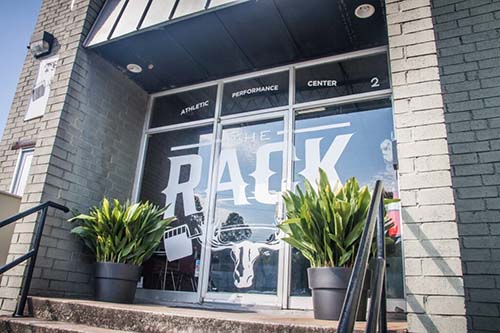Optimizing Fitness with General Physical Preparedness (GPP)

General Physical Preparedness (GPP) is a game-changer in the world of fitness.
This holistic approach to training is all about building a solid base for athletic performance.
No, it’s not just another empty phrase in the health and fitness realm. General Physical Preparedness has been around for quite some time, helping athletes enhance their overall fitness levels.
The beauty of GPP lies in its versatility – it doesn’t cater to one specific sport or activity but provides benefits across the board.
Table of Contents:
- Understanding General Physical Preparedness (GPP)
- Components of General Physical Preparedness
- Integrating GPP into Your Training Routine: A Guide
- Tracking Your Progress in General Physical Preparedness (GPP)
- FAQs in Relation to General Physical Preparedness (Gpp)
- Conclusion
Understanding General Physical Preparedness (GPP)
The concept of general physical preparedness, often abbreviated as GPP, is a vital component in the world of athletic training. Its role extends beyond enhancing fitness levels; it lays down the groundwork for sport-specific training.
Definition and Purpose of GPP
In simple terms, general physical preparedness refers to an all-encompassing conditioning program that seeks to elevate basic movement skills and overall physical capabilities. The primary objective here isn’t specialization but rather establishing a broad base from which athletes can hone their specific attributes based on sports requirements.
This kind of preparation incorporates diverse exercises aimed at boosting endurance, strength, speed, among other critical elements necessary for peak performance across various sporting activities. By integrating different movements into your regimen, you’re essentially priming your body to handle more strenuous routines further along your journey towards achieving optimal general physical preparedness.
GPP forms the bedrock upon which Specific Physical Preparedness (SPP) stands, where athletes concentrate on refining particular skills pertinent to their chosen sport, like a sprinter’s GPP due to its focus on cardiovascular health and muscular power.
The Importance of GPP in Athletic Training
A balanced plan based on the current physical condition ensures an athlete’s prowess spans multiple domains instead of just one area of excellence. This is achieved through regular engagement with programs focused on improving work capacity, recovery time, and long-term performance metrics – hallmarks of an effective GPP work strategy.
Beyond these measurable benefits, though, lies another crucial advantage – versatility. Whether looking to join a GPP program to enhance recreational pursuits or professional aspirations, there will always be something suitable available regardless of the level of expertise thanks to the wide range of options offered under the umbrella term “general”. So remember: whether an elite athlete or a beginner wishing to improve overall fitness, take full advantage of the unique programs such as the ones we offer at Ed Miller Rack.
General Physical Preparedness (GPP) is a key stepping stone in athletic training, laying the foundation for sport-specific skills. It’s not about specialization but building overall physical prowess and versatility through diverse exercises. GPP isn’t just for elite athletes; it offers something suitable for everyone looking to enhance their fitness.
Components of General Physical Preparedness
In the journey towards achieving optimal general physical preparedness (GPP), understanding its components is crucial. These elements, which include endurance, strength, and flexibility, are integral to athletic performance across various sports.
Endurance as a Component of GPP
The role that endurance plays in general physical preparedness cannot be understated. It’s about your body’s capability to keep up with extended periods of exertion without tiring out – a basic quality for competitors engaged in long-term activities like marathons or triathlons.
Athletes can build their stamina through activities like running, cycling, or swimming; these exercises work on coordination and balance alongside building up resistance against fatigue.
Strength Development in GPP
Moving onto another important component: Strength development focuses on improving force production capabilities by targeting specific muscle groups with resistance exercises. This element is vital for power-based sports, but it also aids in maintaining good form during strenuous routines, thus preventing injuries – an aspect critical when you consider the sprinter’s GPP due to the importance placed upon speed and burstiness movements therein.
This approach applies progressive overload principles where intensity gradually increases over time, thereby allowing safe progression while simultaneously challenging muscles, leading to better results overall. Regardless of the sport involved, whether high-intensity sprints or low-impact yoga sessions, both benefit from improved mobility offered by flexible joints, tendons, ligaments, etc. Therefore, GPP should be tailored to each individual’s needs and preferences rather than following a generic template. Hence, understanding each of these components and how they interrelate is so important when designing a unique GPP program catered specifically to your personal attributes and aspirations. This ultimately leads to better results and less likelihood of setbacks along the way, thus making sure efforts aren’t wasted but instead maximized to the fullest extent possible, giving the best chance for success in the field of endeavor you choose to pursue moving forward. Life’s journey itself is essentially about finding balance between various aspects of ourselves and striving to achieve harmony within and without. The same principle applies here too, where
Mastering General Physical Preparedness (GPP) is all about understanding and improving endurance, strength, and flexibility. Tailoring your GPP program to your personal needs ensures you get the most bang for your buck in any athletic endeavor.
Integrating GPP into Your Training Routine: A Guide
The inclusion of General Physical Preparedness (GPP) in your workout regimen is a calculated process that requires meticulous planning and execution. The aim here is to formulate a balanced plan based on the athlete’s current physical condition, ensuring gradual improvement without overexertion.
1. Boosting Work Capacity with Effective Exercises
Incorporation of exercises designed to increase work capacity forms an integral part of any successful GPP training program. In this context, ‘work capacity’ refers to the total volume of strenuous routines one can perform while maintaining peak performance levels – something you can enhance using high-intensity interval training (HIIT).
With HIIT workouts characterized by short bursts of intense exercise followed by brief recovery periods, athletes not only improve cardiovascular endurance but also boost muscular strength simultaneously – all contributing towards improved general physical preparedness.
2. Enhancing Recovery Time Through Strategic Practices
An important phase within any effective GPP program involves strategies aimed at improving post-workout recovery time; this includes practices like proper nutrition intake immediately after exercising and getting enough sleep each night.
Eating protein-rich foods or taking supplements shortly after exercise helps replenish muscle glycogen stores quickly while promoting muscle repair during rest periods. Additionally, ensuring adequate quality sleep aids tissue regeneration processes necessary for full recovery from rigorous workouts.
3. Long-Term Performance Benefits From Regularly Incorporating GPP
The long-term benefits associated with regularly incorporating GPP are numerous; these include increased flexibility, better athletic performance across various sports due to enhanced specific physical attributes such as strength or endurance, and even injury prevention.
A classic example would be sprinter’s GPP training where they focus on building their base level fitness before moving onto more specialized drills. This kind of preparation ensures they have the foundation needed to excel in their sport and maintain good health throughout their career. This article provides insights on how modern sportspersons can incorporate both specialized and general exercises tailored to their individual needs.
Maximize your fitness potential by integrating General Physical Preparedness (GPP) into your routine. Boost work capacity with high-intensity interval training, enhance recovery time through strategic nutrition and sleep practices, and reap long-term benefits like increased flexibility and injury prevention.
Tracking Your Progress in General Physical Preparedness (GPP)
Evaluating your progression within the realm of general physical preparedness (GPP) is an integral part of any fitness journey. It’s not just about ticking off completed workouts, but rather understanding how these sessions are enhancing your ability to work, recover, and perform over extended periods.
Gauging Improvement in Work Capacity
Your capacity to handle increased workload is a clear indicator that you’re making strides with GPP training. To measure this improvement effectively, keep tabs on both volume and intensity during each workout session – two key elements defining work capacity.
A well-maintained workout log can serve as a valuable tool for tracking changes over time by documenting exercises performed, sets done, reps achieved, or weights lifted among other details. This data provides insights into whether your current physical condition has improved due to consistent GPP work or if there’s a need for adjustments.
Assessing Recovery Time Enhancements through GPP Practices
Beyond boosting performance levels, another important phase where GPP shines is recovery between strenuous routines. A reduced recovery period allows athletes more frequent high-intensity trainings without the risk of injury or burnout, which could be attributed to their specialized general physical preparation efforts.
By assessing post-workout muscle soreness, fatigue, sleep quality and heart rate variability, one can evaluate the effectiveness of GPP in terms of recovery. These indicators provide insight into the body’s response to stress and its readiness for the next session. If you notice less discomfort and quicker return to normal HRV values, it may indicate a positive impact of GPP practices.
Minding Long-Term Performance After Integrating GPP Into Routine
The long-term benefits of incorporating regular GPP training aren’t immediately apparent; they unfold gradually over time, yielding significant gains in endurance, strength, flexibility, and other specific physical attributes. As such, assessing progress requires a holistic approach that includes subjective and objective measures. How do you feel after completing a sprinter’s GPP routine? Is it easier to carry out daily activities? Are you performing better in sport-specific tasks?
These observations, coupled with quantitative markers
Don’t just tick off workouts, gauge your GPP progress. Monitor work capacity improvements and recovery time reductions. Use workout logs for insights and adjustments. Remember, benefits unfold over time; assess holistically using both feelings and facts.
FAQs about General Physical Preparedness (GPP)
Why is General Physical Preparedness important?
GPP enhances overall fitness levels, laying a solid foundation for sport-specific training. It improves work capacity, recovery time, and long-term performance across various sports.
What is the GPP method of training?
The GPP method focuses on improving general aspects of fitness like endurance, strength, and flexibility. This non-sport specific approach boosts athletic readiness for any physical activity.
What does GPP stand for in fitness?
In the realm of fitness, GPP stands for General Physical Preparedness. It’s an all-encompassing approach to improve overall athleticism and physical capability.
How long should a GPP phase last?
A typical GPP phase can last anywhere from 4 to 12 weeks depending on individual goals and the current level of conditioning.
Conclusion
GPP is a phrase that goes beyond the realm of just physical fitness; it’s the basis for any athletic success.
It’s about building endurance, strength, and flexibility – the trifecta that underpins any sport or physical activity.
You’ve learned how to weave GPP into your training routine with exercises designed to enhance work capacity and recovery time.
The journey doesn’t stop there though. You now have tools to evaluate your progress in GPP, tracking improvements in the ability to perform for longer periods.
This holistic approach is integral to Ed Miller The Rack Athletic Performance Center’s philosophy on fitness and athleticism.
If you’re ready for a transformational journey towards achieving optimal General Physical Preparedness, we invite you to join us at The Rack Athletic Performance Center. Our experienced coaches are devoted to assisting people of all ages and abilities attain their particular fitness objectives through customized training regimens designed just for them. Let’s get started today!

